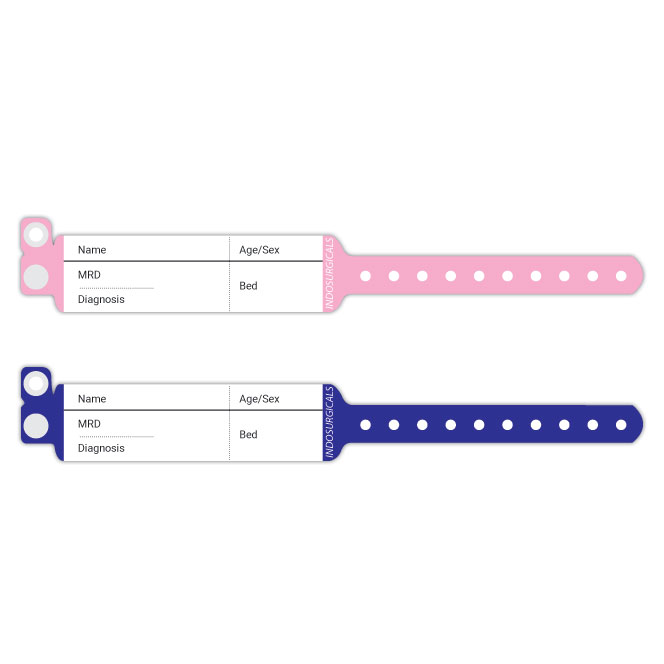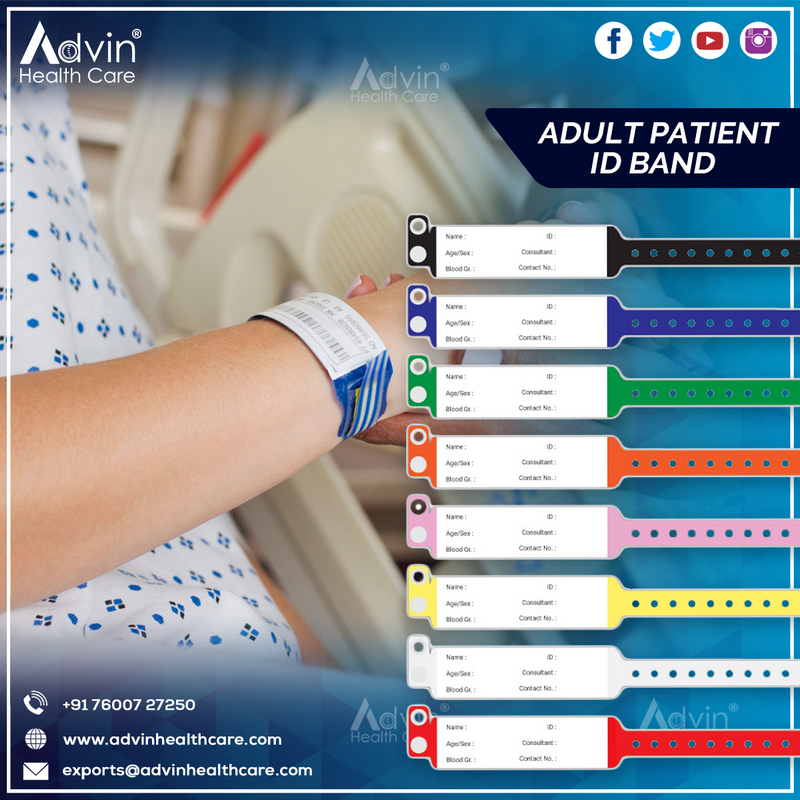Checking Out the Numerous Kinds Of Patient Identification Band Utilized in Clinical Facilities
In the intricate world of health care, the vital duty of Patient Identification bands typically goes undetected. These bands, varying from simple paper wristbands to advanced RFID bands, form the backbone of Patient security methods, making certain accuracy in Patient Identification.
Recognizing the Importance of Patient Identification Bands
While they might appear like plain devices, Patient Identification bands play a vital role in clinical facilities. These bands offer as a crucial device for validating Patient identification, protecting against medical errors connected to misidentification. The bands typically present important info such as the Patient's name, age, blood group, and any type of recognized allergic reactions. They allow healthcare experts to quickly access this essential details, thus helping with timely and accurate clinical therapy. Patient Identification bands likewise aid in streamlining management tasks, guaranteeing accurate record-keeping and payment. Regardless of their simplicity, these bands personify the principle of Patient safety, a foundation of high quality health and wellness treatment. Without them, the risk of clinical mistakes, and subsequently, Patient damage, could dramatically boost.
Standard Paper Wristbands: Their Usage and Limitations
Traditional paper wristbands have been a staple in Patient Identification across different clinical centers. While their usage is prevalent, they nurture certain limitations that may impact their performance in Patient administration. This section will concentrate on the scope of their application and the inherent disadvantages connected with their use.
Paper Wristbands: Use Range
In the world of Patient Identification, paper wristbands have actually long held an important role. These bands are generally made use of in outpatient setups, where the Patient's stay is short-term. The wristbands have necessary info such as the Patient's name, day of birth, and an unique Identification number. This basic, yet reliable system, permits physician to quickly and accurately determine patients, making sure the right therapy is carried out. Paper wristbands are likewise used in emergency situation scenarios, where rapid Identification is vital. Their usage encompasses events like blood contribution drives and mass vaccination programs, even more highlighting their flexibility. Regardless of developments in innovation, the modest paper wristband stays a reputable and economical option for Patient Identification in numerous healthcare scenarios.
Limitations of Paper Wristbands
Despite their prevalent use, paper wristbands are not without their disadvantages. Their physical resilience is one of the substantial restrictions. Direct exposure to water, sweat, or rough handling can make them unreadable and even create them to disintegrate. In enhancement, paper wristbands typically lack the technological capabilities of more contemporary choices, such as barcoding or RFID chips, restricting their capability to simply displaying composed information. The inability to update or modify the information on the wristband is another shortcoming. Additionally, if the details is transcribed, legibility can be jeopardized, bring about prospective misidentification. Paper wristbands can trigger discomfort or skin inflammation to some people, particularly when put on for extensive periods.
Barcoded Wristbands: Improvements in Patient Identification
While Patient Identification has actually long been a crucial element of health care, the arrival of barcoded wristbands indicates a considerable jump forward. These bands utilize the simplicity of barcoding modern technology, enabling Patient details to be promptly scanned and accessed. They enhance the rate and accuracy of Patient Identification, minimizing the threat of medical mistakes connected to misidentification. Barcoded wristbands are affordable, very easy to create, and eliminate handwriting mistakes usual with hand-operated systems. Nonetheless, they are browse around these guys not without constraints. While they supply improvements over standard bands, the barcode can end up being smudged or used, making it unreadable. In spite of this, barcoded wristbands stay a vital device in modern health care setups, representing the intersection of technology and Patient care.
Radio Frequency Identification (RFID) Bands: a Step In The Direction Of Futuristic Healthcare
The evolution of Patient Identification bands has actually produced the emergence of Superhigh frequency Identification (RFID) Bands (patient identification band). These ingenious tools present crucial benefits for healthcare facilities, offering a more reliable and technologically advanced means of Patient Identification. The execution of RFID in medical care is a substantial step towards a more advanced strategy to Patient management and security
Comprehending RFID Bands

RFID Bands: Trick Advantages
Mostly, these bands enhance Patient safety and security by supplying precise, rapid Identification, therefore lowering see this site medical errors. RFID bands can save a vast amount of Patient information, consisting of medical history and allergic reactions, allowing personalized treatment. Overall, RFID bands represent a considerable improvement in Patient Identification modern technology, benefiting both people and medical care providers.
Implementing RFID in Medical Care
As we enter a technologically sophisticated era, the implementation of RFID bands in medical care becomes increasingly vital. These bands offer a smooth way to track and determine clients, guaranteeing their safety and security and enhancing effectiveness in treatment procedures. RFID bands supply numerous advantages over standard Identification techniques. They can keep a large amount of information, including the Patient's case history and therapy plans, which can be quickly accessed by medical care carriers. This data assists physicians make notified choices pertaining to the Patient's treatment plan. RFID bands decrease clinical mistakes by providing accurate Patient Identification, which is vital in avoiding misdiagnosis or wrong medicine management. Therefore, the application of RFID bands is a significant action towards boosting Patient safety and security and medical care distribution.

Color-Coded Wristbands: Aiding in Quick and Accurate Diagnosis
In the dynamic environment of a medical center, color-coded wristbands have emerged as crucial devices for swift and accurate Identification of a person's medical problem. These wristbands, put on by patients, bring details colors that correspond to different clinical problems or statuses. This system is developed to use prompt visual hints to health care providers, enhancing Patient security and care top quality.
Strategies for Effective Implementation and Administration of Patient ID Bands
Accomplishing optimal usage of Patient Identification bands requires a well-structured strategy for their application and management. Patient education is additionally important; patients have to comprehend the function of the bands and the requirement for their constant wear. It's crucial to have a backup strategy in location, such as barcode scanning or biometrics, to make certain that Patient Identification is never jeopardized.
Conclusion
Patient Identification bands are crucial in clinical centers to make certain safety and accuracy. Efficient execution and monitoring of these bands can significantly decrease medical mistakes, improve performance, and boost overall Patient care.
These bands, varying from easy paper wristbands to advanced RFID bands, create the foundation of Patient safety and security methods, ensuring precision in Patient Identification.The evolution of Patient Identification bands has actually brought concerning the emergence of Radio Frequency Identification (RFID) Bands. Overall, RFID bands stand for a substantial advancement in Patient Identification modern technology, profiting both individuals and medical care companies.
RFID bands reduce medical mistakes by giving exact Patient Identification, which is important in avoiding misdiagnosis or wrong official statement medication management. Patient education is also essential; patients must recognize the objective of the bands and the requirement for their continuous wear.